-
Waves: The transfer of energy from one place to another without the net displacement of matter
- I.e. after energy is transferred, there is no displacement of matter
-
Mechanical waves: transfer energy from one place to another without the net displacement of matter, but requires a medium to propagate
- The particles in the medium vibrate back and forth about fixed positions (equilibrium position)
-
Transverse waves: particles vibrate perpendicular to the direction of energy flow, e.g. water, electromagnetic waves
-
Longitudinal waves: particles vibrate along straight lines parallel to the direction of the energy flow
-
However:
- Assumes no other disturbances in the motion
- Ignores situations where there is no medium
-
Requirements for medium:
- Mechanical waves must have a medium, e.g. sound
- Non-mechanical waves do not require a medium, e.g. EMR
Anatomy of a Wave
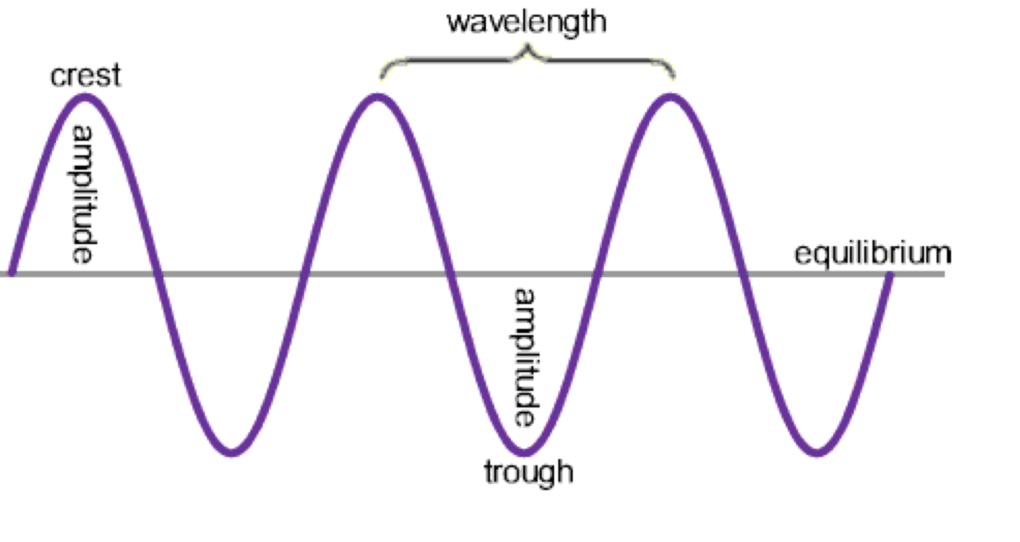
- Crest: Highest displacement of a particle in the positive direction
- Highest point in the graph
- Trough: Lowest displacement of a particle in the negative direction
- Lowest point in the graph
- Wavelength (): Distance between any 2 consecutive points in a wave that are in phase
- From one crest to another crest
- From one trough to another trough
- Distance it takes for the wave to repeat
- Frequency (f): The number of complete oscillations per second. Unit of frequency is the Hz(Hertz)
- Remains constant, even if reflected/refracted
- Frequency and wavelength are inversely proportional to one another
- Period (T): Time take for one wavelength to complete (seconds), equal to
- Phase: State of vibration that a particle has reached in its cycle of motion. Waves are in phase when particles of the wave move in the exact same way at the same time
- Speed = distance/time
- Distance = speed time
- Time = distance/speed
- Speed of sound at is
- remains constant, thus if increases, increases
Wave Behaviours
- Energy incident upon a surface is
- Reflected
- Absorbed
- Transmitted (goes through the object)
- Usually a combination of these 3
Reflection
Reflection
- When energy is incident upon a surface (e.g. boundary between 2 different mediums), then some/all of the energy “bounces” back into the original medium
Law of Reflection
- The angle of reflection is equal to the angle of incidence
- Angle of incidence: angle between the incident ray and the normal
Refraction
- Occurs when a wave passes from the medium to another, at an angle other than 90˚ and changes direction
- Changes speed, and therefore wavelength, but not frequency
- NB: The media may simply be referred to as slow(er) or fast(er)
- We all know that in order of density, solid > liquid > air > vacuum
- Sound: speed of sound increases with density of medium
- Light: speed of light decreases with density of medium
- If a ray goes into a slower medium it bends towards the normal
Diffraction
- Bending/spreading of waves beyond a gap/slit/aperture with no change in wavelength, frequency or velocity
- Diffraction around corners
- When a wave moves past a corner, due to the wavefront being a source of secondary wavelets; the wave diffracts and spreads out.
- The area where there is no diffraction is called the shadow region
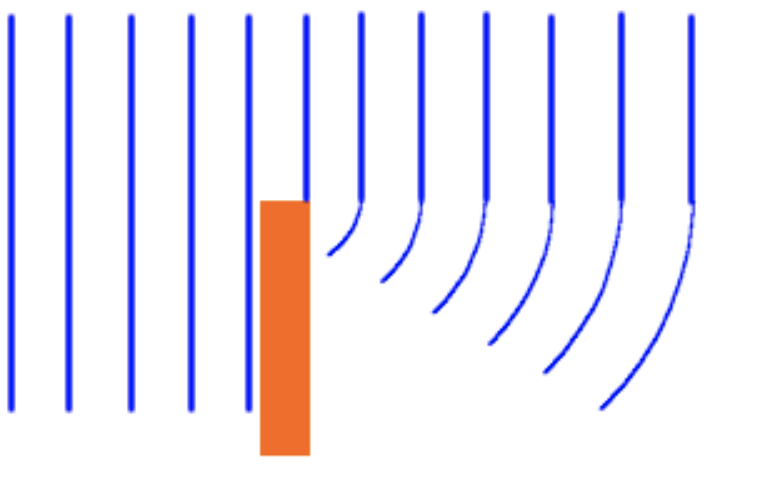
- Wavelength Effect
- Diffraction increases with increase in wavelength.
- Thus long wavelength (low frequency) waves are diffracted more than short wavelength (high frequency) waves
- This is why ultrasound waves don’t diffract much and are used for locating purposes such as in sonar or ultrasound; they do not disperse/diffract much at all.
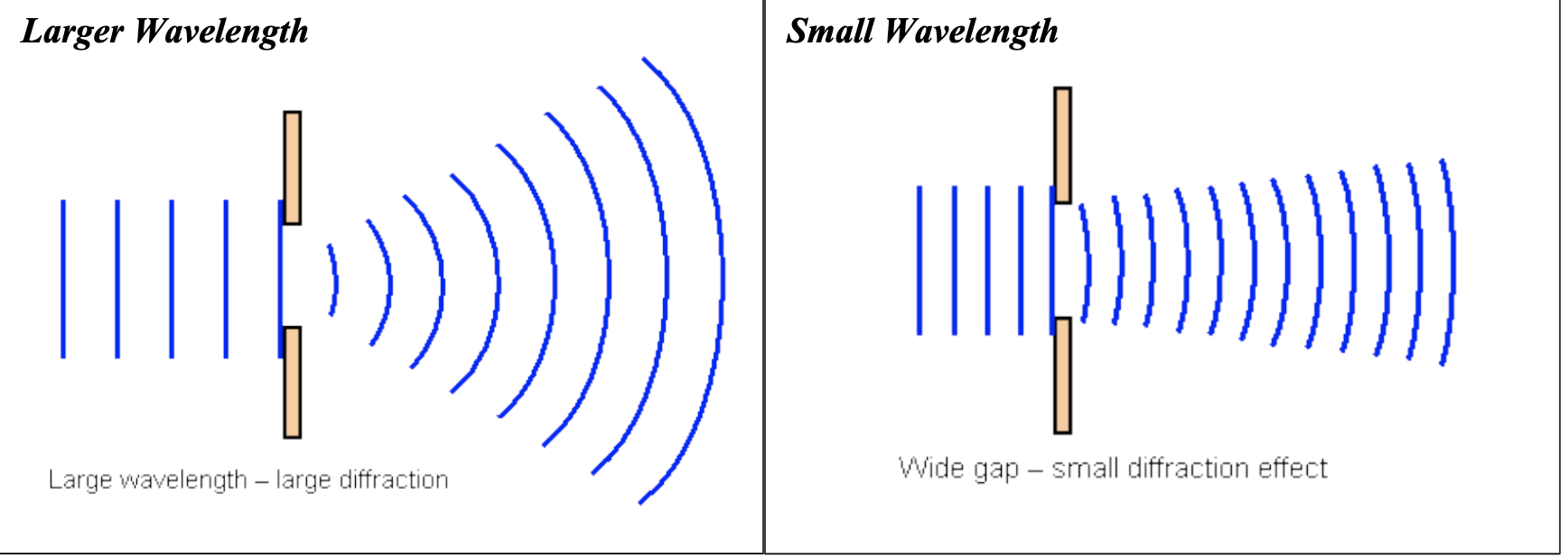
- Aperture Size Effect
- As the aperture size increases, the extent of diffraction decreases.
- As the aperture Size decreases, the extent of diffraction increases
- The diffraction is greater when wavelength size is roughly equal to the aperture size
- For apertures smaller than the wavelength size, there is no diffraction
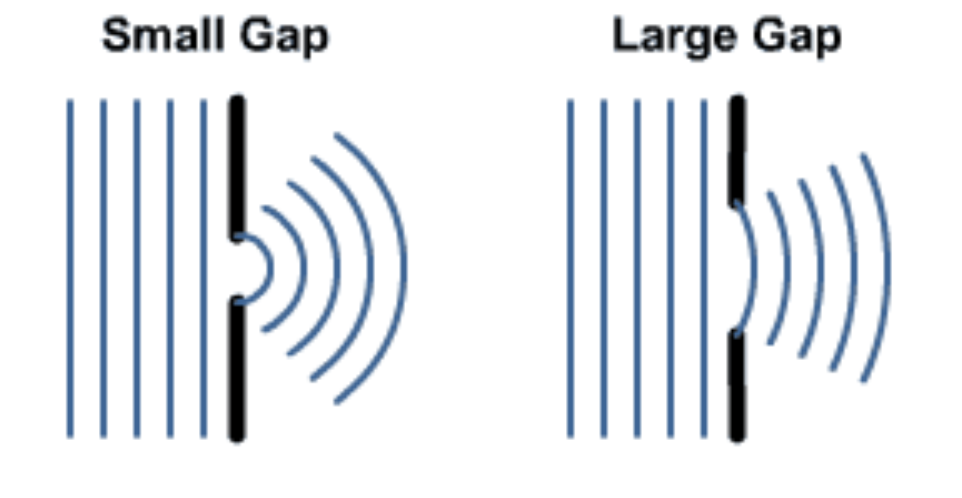
Intensity
- Intensity: power output per unit area, measures in Watts per metres squared
- Intensity is known to decrease by the inverse square law of waves as they spread in ALL directions
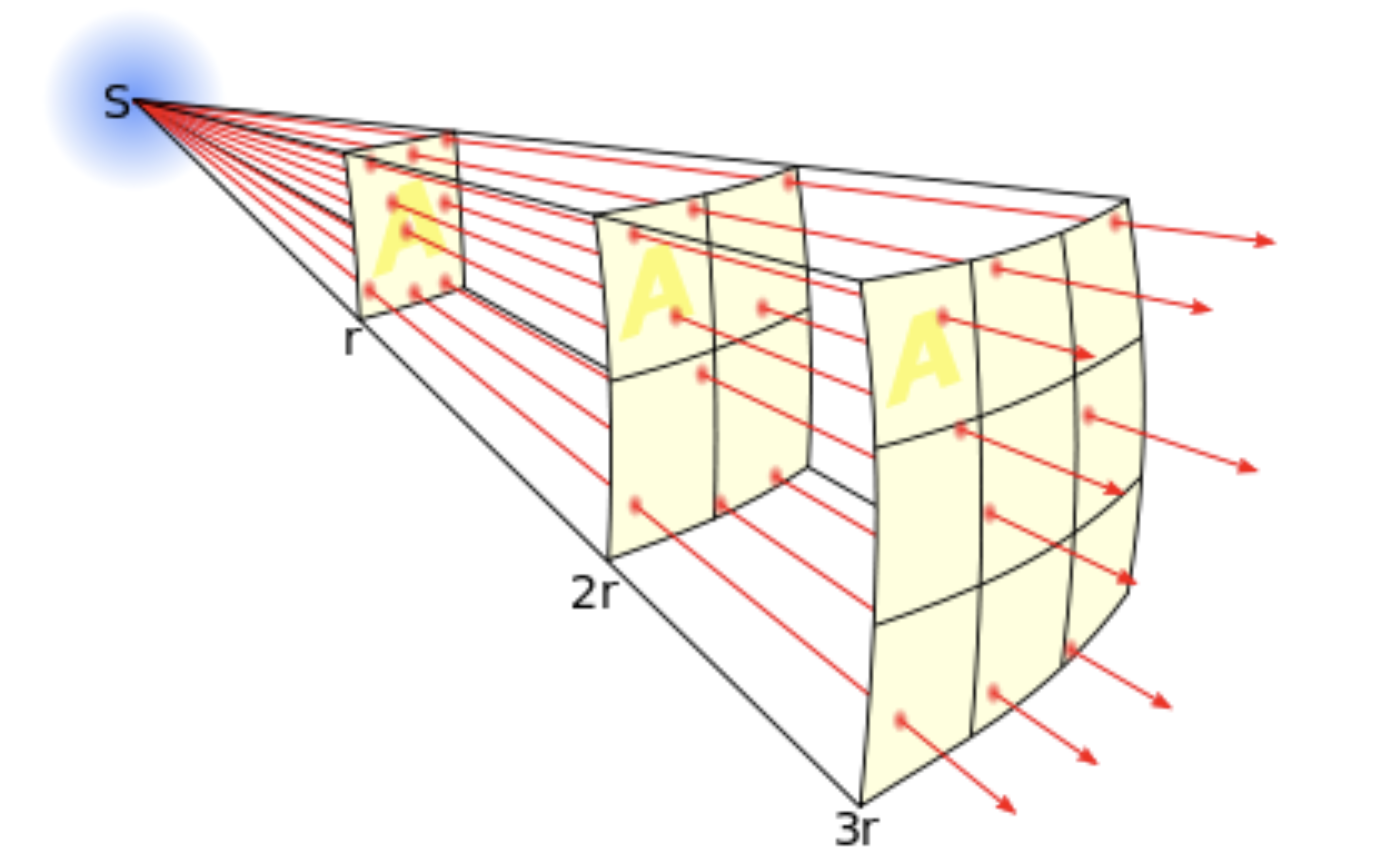
- Intensity is proportional to the inverse of the square of the length/radius